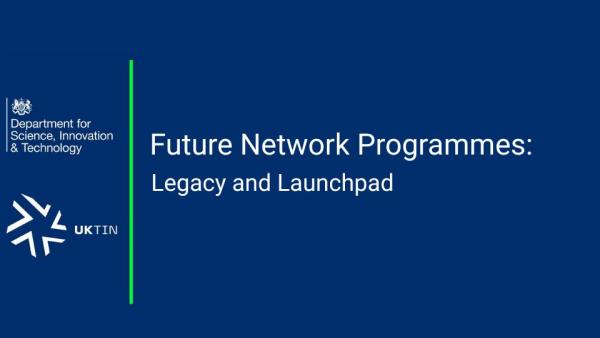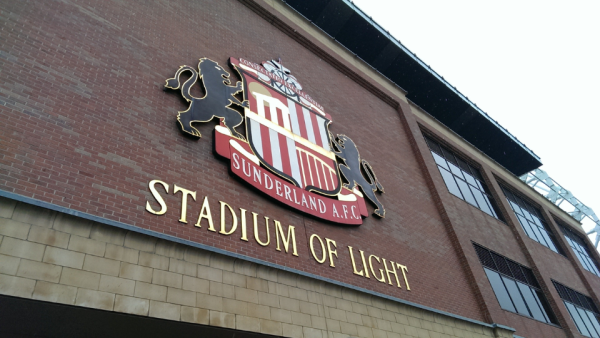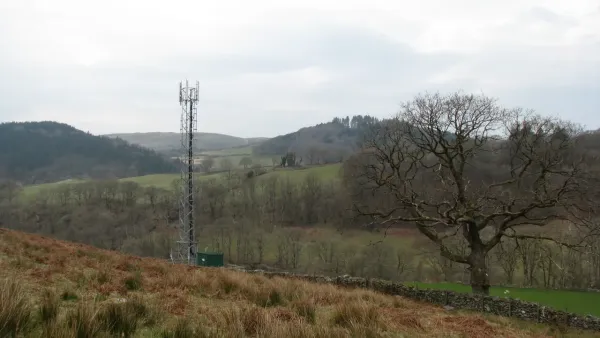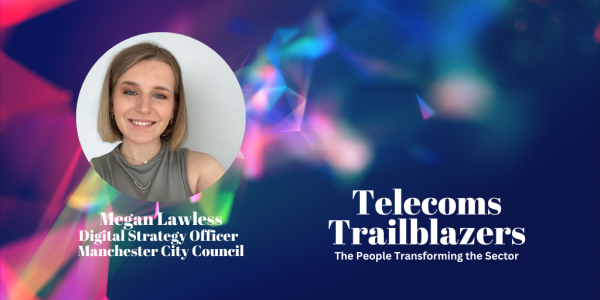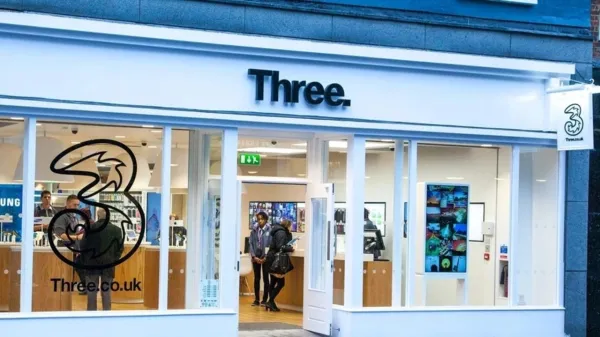In 2017, following the announcement of the Government’s £200m investment, the 5G Testbeds and Trials (5GTT) Programme was launched.

With a clear mission to build, foster and lead 5G for the UK, we wanted to build the business case demonstrating possibilities well beyond mobile connectivity, to foster the development of a vibrant 5G ecosystem, and to lead experimental R&D to showcase solutions of UK companies, research centres and innovators.
In the six years since then, we have witnessed spectacular levels of hard work and innovation. In this article, we take a look back through some of the highlights from this period of rapid growth and change.
University Test Network
In July 2017, the Department for Digital, Culture, Media and Sport (DCMS) funded a £16m test network consisting of a collaboration between the 5G Innovation Centre at the University of Surrey, the University of Bristol and King's College London.
The university test network (5GUK) created the world’s first end-to-end 5G network, which supported other projects later in the 5G Programme.
The 5GUK test network was used to trial further 5G applications and technologies, with over 25 projects using it beyond the 5G Programme. This included a world first at the Smart Tourism showcase event where two violinists, a pianist and a singer performed a piece of music together, live from 3 different locations over the 5G network.
Use Case Trials
Later in 2017 we ran a competition that resulted in a portfolio of 6 projects with diverse applications. Precision farming with drones, increasing manufacturing productivity through connected-robotics, connected cars, and using IoT to improve healthcare were among the projects that set the bar for the level of innovation we were to see throughout the programme.
The geographical spread offered a variety of challenges and opportunities; from salmon pens near the Orkney Islands, deprived areas of Liverpool, to modern factories in Worcester. Through these testbeds and trials we were able to create real life experiments to evaluate new business models, most of which have gone on to develop into further trials or develop into commercially viable businesses. At least 19 market-ready products were produced, alongside 36 proof of concepts.
West Midlands 5G (WM5G)
In 2018 we established the UK’s first full urban 5G testbed in the West Midlands, which opened the door to many similar cutting-edge projects. WM5G has gone from strength to strength, testing models for cost-effective deployment of 5G infrastructure in highly populated urban areas and removing barriers to deployment.
Since its inception the project has been working closely with Mobile Network Operators and Local Authorities, using a variety of innovative tools and approaches to accelerate the roll-out of 5G across the region.
WM5G had an array of interventions, including the 5SPRING test centres. The centres engaged with over 500 organisations and showcased a variety of benefits which are still ongoing. Organisations included those within public transport and manufacturing, where they showed networks could be deployed cheaply, and still have big impacts, improving the overall equipment effectiveness from 28% to 37%.
Robert Franks Managing Director of West Midlands 5G Limited said:
“The 5G Testbeds and Trials programme (5GTT) has been a pioneering innovation programme to accelerate UK leadership in 5G and it’s been a privilege to lead West Midlands 5G (WM5G) as part of it. Thanks to the combined efforts of Government, industry and local gov’t, WM5G has successfully accelerated 5G adoption by more than 6 months in the West Midlands – creating the best connected region for 5G – and delivered over £200m GVA in benefits for critical sectors including manufacturing, transport and health & care as well as launching the UK’s first 5G Accelerators to help over 200 SMEs boost productivity.
Furthermore we’ve successfully leveraged WM5G’s capabilities to deliver further benefits in a commercially self-sustainable way. Since the end of the 5GTT funding in March 2022, WM5G has gone on to win other commercial and public sector contracts worth over £10m. This has enabled us to extend our focus to accelerate fibre broadband and digital inclusion as well as 5G, to support further telecoms innovation as part of UKTIN and to lead adoption of 5G benefits in the health and care sector and with over 700 SMEs. We look forward to continuing this work as connectivity continues to become even more important. And once again I’d like to say a big thanks to the DSIT 5GTT team for all of their support over the last four years.``
International
The programme also had significant international impact, paving the way for international partners to engage with the UK Government on 5G. Within the recent evaluation of the programme, 50% of respondents said that 5GTT has helped to improve the UK’s international reputation as a leading 5G nation.
Dr Mike Short CBE , Past Chief Scientific adviser – Dept of Business and Trade, UK Government and UKTIN Advisory Board Chairman said:
5GTT and UK5G together have provided an amazing Government backed Digital showcase for innovation and influence, that has been looked at Internationally as a model for 5G deployment, development and lessons learned. The focus on pragmatic applications to raise understanding, adoption and fresh approaches to mobile has been seen at international events and led to trade missions…..a strong combination to energise Sector interest in the UK and UK companies.
Supporting over 120 UK companies at MWC 2023 Barcelona showed the depth of UK talent and international interest in 5GTT – this would have been much harder to organise without such a focused programme and evidence of a real Telecoms Focus .
The programme’s international success was demonstrated in the project which linked UK and South Korean businesses to pilot 5G technology across the Seoul and Glasgow metro systems. The joint project supported businesses in the two countries to develop and test 5G applications that explored new experiences for tourists and commuters on public transport.
Rural Connected Communities (RCC)
In 2020 we announced 7 rural projects which explored the opportunities for 5G to enhance tourism experiences, health and social care, public safety and agriculture among other applications.
The use cases provided a combination of societal and economic benefits that have helped to make a stronger case for investing in the deployment of 5G infrastructure for rural areas.
In Nottinghamshire, the Sherwood Forest project saw cutting-edge apps transform the visitor experience, with Robin Hood telling the history of the mediaeval forest via virtual and augmented reality on 5G networks. Robotic environmental management was also tested alongside live monitoring of the health of Sherwood Forest to preserve the site for future generations.
The Mobile Access North Yorkshire (MANY) project worked with the local community to develop a number of benefits, including improving wellbeing and mental health, boosting tourism opportunities and enhancing the safety of the area through environmental monitoring. One of the tourism use cases it developed was set in the Forbidden Corner, a tourist attraction which hosts a four-acre garden in the heart of the Tupgill Estate, Coverdale. The site welcomes over 120,000 visitors a year. The app that was developed enhanced the onsite customer experience by bringing characters to life within its labyrinth of tunnels, chambers and follies via 5G enabled augmented reality. They found that customers who used the 5G app spent 12% more money at the location helping to boost business at the centre.
Industrial
Our 2 projects from the Industrial competition, 5GEM and 5G ENCODE, were announced in line with the RCC projects. These projects tested the benefits of using 5G to boost productivity in the manufacturing sector.
They were able to explore the potential for efficiency and productivity increases through 5G enabled technology such as real-time monitoring and automated adjustments, connecting suppliers to unlock new business models, automated maintenance scheduling, and VR/AR enhanced workplace safety.
Manufacturing use cases allowed increased automation, greater remote working and more accurate location tracking. 5GEM showed that 5% of scrapped material could be avoided with more accurate 5G sensors, and 5G ENCODE showed a 25% reduction in labour costs with automation by allowing workers to manage multiple machines at once.
5G Create
In 2020 we wanted to further explore and develop new use-cases and 5G technical capabilities.15 diverse projects were chosen, covering sectors within creative, logistics, construction, sport, manufacturing and transport. Out of this, some exciting use cases were discovered.
The Eden Project in Cornwall explored how 5G, along with the use of 360 degree video, can enhance the visitor experience and allow anyone to enjoy the exhibits and talks.
On the Isle of Wight people were encouraged to take up yacht racing, using immersive virtual reality experiences in a bid to explore use-cases for the sports’ industry.
Professor Adam Beaumont, Chairman of aql said:
The DCMS (now DSIT) UK 5G Testbeds and Trials programme has been hugely beneficial to the entire industry. aql has been the Mobile Network Operator partner behind five of the “5G Create” projects and also one of the newer O-RAN initiatives. Many of these projects are now in the commercialisation stage and we’re looking forward to making future announcements. Notable projects include “Eden Universe”, a VR platform allowing the Eden Project to scale digitally and globally and the AMRC 5G Factory of the Future, driving innovation in modern manufacturing.
The use of AI-controlled traffic lights to reduce pollution and congestion was tested in Manchester and the potential for remote music festivals using 5G was tested by the Brighton Dome.
The Green Planet 5G project developed an augmented reality (AR) app for mobile phones at events, using 5G connectivity to accompany the BBC TV series ‘Green Planet’ which aired January 2021. The aim was to encourage public engagement with the environment. The app streamed high-resolution holographic videos of Sir David Attenborough, scientifically-accurate digital creatures and botanical imagery. The project delivered content to large groups of mobile users, in a congested location for a 3 week public trial at 55 Regent Street, London. This showcased what an augmented reality exhibit could achieve. They found that over 60% would be willing to pay between £9 and £20 per visit and 29% of visitors said they would make their lives more sustainable after the event.
In construction, the AMC2 project developed a private 5G network in Shetland. This supported the building of a power substation for a new onshore wind farm to provide electricity from renewable sources, into the UK grid and to connect Shetland to the UK electricity grid for the first time. The project showed that when 5G was applied to their construction site a saving of almost £2m was made over the course of the project.
Liverpool 5G developed a 5G network for local NHS, social care services and education. The aim was to provide affordable connectivity for remote health and social care. It pioneered use cases in care homes, showing how connectivity and digitalisation can lead to better outcomes in care. Their use case of a haptic hug showed how connectivity can reduce feelings of loneliness, and sensors allowed staff to react quicker to falls and incidents.
The Live and Wild project used 5G’s ability to broadcast high quality live content and transfer huge video files from a variety of remote locations, extreme terrains and weather conditions. Activities included caving in the Yorkshire Dales, sea cliff climbing in North Wales and ultra-running across Britain.
UK5G
Throughout this programme we have seen the importance of collaboration and ecosystem building for developing a successful environment in which projects grow and flourish. UK5G played a key role in this. It did a fantastic job in bringing together businesses from the telecoms space with vertical sectors which could take advantage of 5G. UK5G also established working groups to allow people to test concepts and work together to address any challenges the industry faced.
Ros Singleton, Chair, Telecoms Supply Chain Diversity Advisory Council said:
I feel really fortunate to have got to work with and learn from such a large number of generous, talented people from so many different areas of public and private sectors across the country. We really showed what technology can achieve with the right incentives and set a template other countries are looking to re-use for their own initiatives. Beyond that, the thinking about and learning from the 5GTT programme has helped develop and drive the thinking around other initiatives such as the ONE competition and UKTIN which I hope will deliver more value by having a good foundation to work from.
What’s next
Even though the programme and its funding has now come to an end, the exciting developments within the 5GTT programme and the progress shown has helped to influence further interventions and funding calls. The recently announced Wireless Infrastructure Strategy has cited the 5GTT projects and the programme's findings as a basis to build on over the coming years. The strategy sets out a new policy framework for driving the deployment and adoption of 5G and other forms of advanced wireless connectivity. It also announced a £40m fund to create 5G Innovation Regions, to drive the adoption of 5G by businesses and the public sector across the UK. The strategy also looks to the future of technology, setting out a new 6G strategy and announcing up to £100m of R&D funding for future telecoms technologies.
The programme has paved the way for further funding through the £250m Open Networks Research and Development Fund. The latest Open Networks Programme competition, The Open Networks Ecosystem Competition, is currently open and offering £80 million of funding to support the development of open network solutions.
I want to thank everyone involved for being part of this journey. The hard work from all of the projects and partners involved has demonstrated not just the potential of 5G, but also the energy and resourcefulness of the UK’s innovators. I very much look forward to watching the seeds planted since 2017 grow and evolve through the next chapter of interventions. None of this would have been possible without the skill and dedication of everyone who contributed to the programme.


